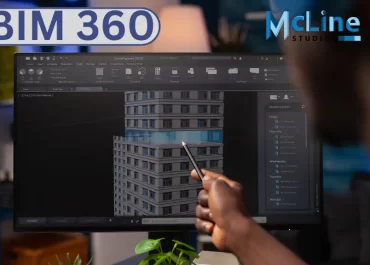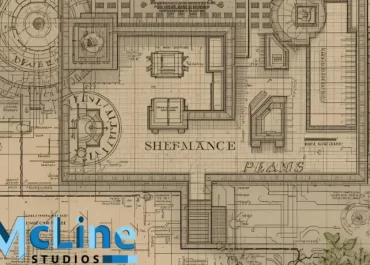You know that warm, inviting feeling you get when you step inside a beautifully designed home or building? The rich woodwork, the detailed moldings, the sleek built-in shelving, and the cabinetry – that’s millwork detailing at its finest. But have you ever stopped to think about just how much planning and precision goes into those stunning details?
Detailing of millwork is like the backstage crew of the architectural world – an often overlooked but essential part of bringing a designer’s vision to life. It’s the process of mapping out every last measurement, joint, and finish for all the wooden elements that make up a space.
So, if you’re an architect, designer, contractor, or simply someone who appreciates the finer details in life, join us as we delve into millwork detailing and its importance.
What Do We Mean By Millwork Detailing?
Millwork detailing refers to the design and specification of custom-made architectural elements typically produced in a mill or woodworking shop. These elements can include trim, moldings, doors, windows, cabinetry, and other decorative or functional components of a building’s interior or exterior.
Detailing involves specifying the exact dimensions, materials, finishes, and ornamental features of these elements to ensure they meet the aesthetic and functional requirements of a particular project.
This process often involves collaboration between architects, designers, and craftsmen to achieve the desired look and feel for a space. Millwork detailing is crucial for creating cohesive and visually appealing interior and exterior environments in residential, commercial, and institutional buildings.

Key Elements Of Millwork Detailing
Millwork detailing involves the design and fabrication of custom architectural elements made from wood, such as doors, windows, moldings, cabinetry, and trim. Here are some key elements of the details of millwork :
- Design: Millwork detailing starts with careful design planning. This includes understanding the architectural style, functional requirements, and aesthetic preferences of the space where the millwork will be installed.
- Material Selection: The selection of the right type of wood is critical for millwork. Different woods offer varying levels of durability, grain patterns, and finishes, which can significantly impact the final look and feel of the millwork.
- Dimensions and Proportions: Paying attention to proportions and dimensions is essential for ensuring that the millwork integrates smoothly with the overall design of the space. This includes considerations such as the height, width, and depth of elements like moldings, panels, and casings.
- Joinery: Strong and precise joinery techniques are essential for ensuring the structural integrity of millwork elements. Common joinery methods include mortise and tenon, dovetail, and finger joints, among others.
- Detailing and Ornamentation: Millwork often includes decorative items and ornamentation, such as carved motifs, fluting, beading, or inlays. These details add character and visual interest to the finished product.
- Hardware and Accessories: The selection of appropriate hardware, such as hinges, handles, knobs, and locks, is an important aspect of millwork. These components not only contribute to the functionality of the millwork but also complement its design.
- Installation Considerations: Millwork detailing should also take into account the installation process. Factors such as site measurements, access to the space, and coordination with other trades are important considerations to ensure a smooth installation process.
Importance Of Millwork Detailing In Architecture
Millwork detailing plays a crucial role in architectural and interior design for several reasons:
- Customization: Millwork detailing allows for the customization of architectural elements such as doors, windows, moldings, cabinetry, and paneling to suit the specific aesthetic and functional requirements of a space. This level of customization enables architects and designers to create unique and visually appealing interiors tailored to their client’s preferences.
- Enhanced Aesthetics: Detailed millwork adds a level of sophistication and elegance to interior spaces. Intricate moldings, trim work, and paneling can elevate the overall aesthetic appeal of a room, creating a sense of luxury and craftsmanship.
- Space Optimization: Well-designed millwork detailing can maximize the functionality of a space by providing storage solutions, defining areas, and optimizing flow. Custom cabinetry, built-in shelving, and architectural elements like wainscoting can help organize and define different areas within a room while maintaining a cohesive design.
- Quality Craftsmanship: Millwork detailing requires skilled craftsmanship and attention to detail. High-quality millwork can significantly enhance the overall perceived value of a property, making it an important investment for homeowners and developers alike.
Takeaways
To sum it up, Millwork detailing has become an integral part of modern architecture. These intricate wood designs are no longer just filling empty spaces, but making bold statements and creating unique environments. Skilled craftsmen use millwork to elevate the look and feel of spaces, adding warmth, character, and artistry that other materials can’t replicate.
Good millwork transforms basic rooms into extraordinary ones. But beyond aesthetics, it also provides smart storage solutions and highlights incredible views. As we look to the future, we’ll likely see millwork detailing take on an even more prominent role.




